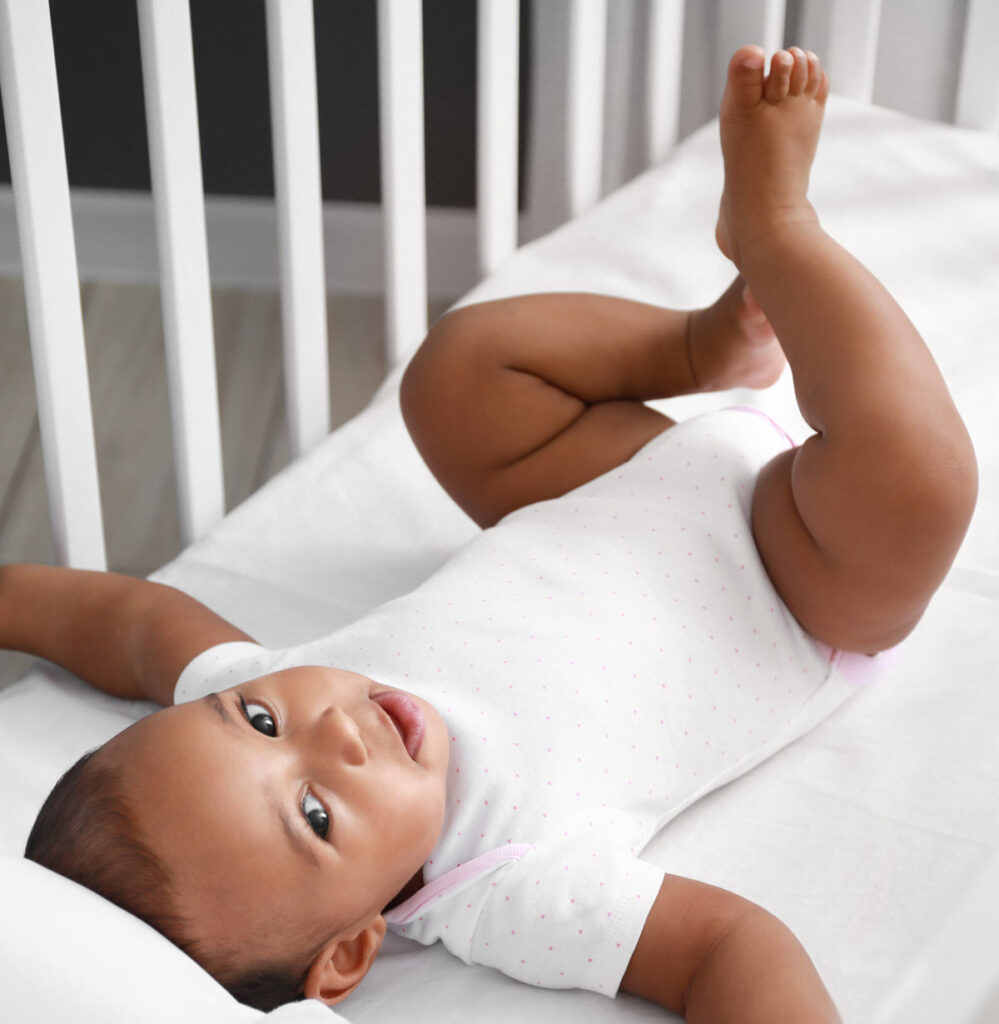Practice the ABCs of safe ZZZ’s
Watch Video
Why learn safe sleep?
Sleep-related deaths are one of the leading causes of death for infants between birth and one-year of age. But most are preventable if you learn the ABCs of safe sleep. Our safe sleep experts can provide you information and training that could save your baby’s life.
Get trainedIt’s easy as 1-2-3

Sleep alone
Learn moreParents should never sleep with their baby. Babies should ALWAYS be in their own safe sleep space for all naps and at night. Keep your baby’s sleep area in the same room as where you sleep for at least the first six months.

Sleep on back
Learn moreBabies who sleep on their backs are much less likely to die suddenly and unexpectedly than babies who sleep on their stomachs or sides.

Sleep in crib
Learn moreUse a firm, flat sleep surface such as a crib, bassinet, portable crib or pack-n-play and ensure your baby’s sleep area is free of blankets, pillows, toys and bumper pads. The only thing cute in your baby’s crib should be your baby.
Know the ABCs. Save a life.
There is no alarm for a suffocating baby. There’s no noise at all. Our safe sleep experts can provide you information and training that could save your baby’s life. Sign up today to learn more life-saving tips that could save your baby’s life.
Keep your baby safe with these simple tips
Firm & Flat
Always place your baby on a firm mattress in a safe crib with a tightly fitted sheet. A safe crib is a bassinet, play-yard or crib that has the spindles no wider than 2-3/8 inches apart and sides that do not drop down.
Sleepytime
Dress your baby in a sleep sack, onesie or wearable blanket, depending on the temperature.
Room Share,
Not Bed Share
Having a baby’s sleep area in the same room, on a separate surface is recommended for the first six months.
Tummy Time
Laying your baby on his/her stomach for brief periods while awake is an important way to help strengthen neck and shoulder muscles. Improving your baby’s motor skills reduces risk of suffocation.
Smoke-Free
Environment
Don’t smoke in your home or around your baby. Children exposed to tobacco smoke are at risk for asthma and other respiratory illnesses, earaches, and SIDS.
Avoid Overheating
Being too hot can increase the risk of SIDS so dress your baby in only one more layer than you’d wear in the same environment.
Knowledge center
Safe Sleep Training
